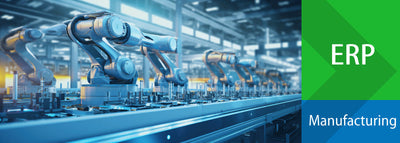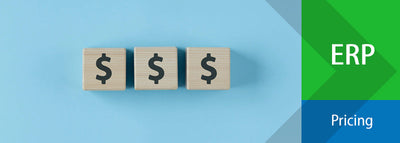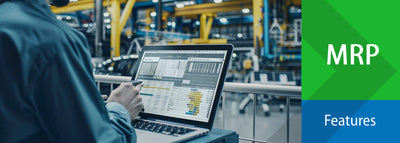The ABCs of HRIS Systems: What You Need to Know Before Buying
With businesses becoming more human-centric, implementing the right human resource information system (HRIS) assures your employees are engaged, growing and effective, and automates dull, repetitive workflows faced by HR teams.
Whether you’re searching for your first HRIS or replacing an old system, there’s no denying the significance of the process. After all, your most valuable assets — your employees — will be tracked by this system.
This guide aims to provide you with a comprehensive understanding of HR software and how it fits into your business, including its categories, features, benefits and emerging trends. It also equips you with what you need to know before buying an HRIS solution. For more information on specific HRIS software systems, check out our evaluation of the top 10 HRIS platforms.
What Is HRIS?
HRIS is software designed to manage disparate HR processes of a business. In addition to a centralized employee database, it provides tools ranging from performance and payroll management to self-service portals, workforce and talent acquisition.

What does HRIS do?
It encompasses a set of modules to help businesses:
- Collect, store and process employee data
- Utilize employee and HR data to guide decision-making
- Standardize onboarding and recruitment
- Attract, extend and retain your talent pool
- Facilitate payroll, compensation and benefits
- Maintain tax and employment regulation compliance
- Engage and monitor employees
- Automate repetitive administrative tasks
- Evaluate employee performance
- Empower employee learning and growth
Not all HRIS vendors offer functionality to help with all of the above processes, and in most cases, buyers can choose and pay for only the modules they want. Advanced platforms may also provide succession planning, accounting and AI-based analytics and prediction tools.
Get HRIS Pricing Report
How Does It Work?
HRIS is the go-to for HR-related tasks in your business.
Firstly, it secures all candidate resumes in a central database, providing a comprehensive overview of all applicants. Then it collects data and provides data-driven insights on recruitment, leaves, compensation, performance and employee demographic records.
Secondly, it creates a structural workplace hierarchy through centralized analysis, reporting and compliance, and automating acquisition and recruitment management.
Why Is It Important?
HR software helps you define an organizational structure, which paves the way to an optimized workforce with the right candidate for the right roles.
It also ensures the smooth functioning of organizational workflows. It assures that management and staff collaborate effectively to meet business objectives with minimum disruptions.
The right HRIS also encourages self-reliance with a self-service portal for employees to upload their information, upload files and update records. It covers numerous HR functions, including connecting and interacting with other business applications and modules.
It optimizes manual tasks, letting administrators focus on improving employee productivity and satisfaction.
Who Uses It?
While HR platforms are suitable for all kinds of businesses, some features are better suited for certain enterprises.
Large businesses with massive workforces and data-handling requirements can benefit significantly from its HR compliance, talent-tracking, payroll and employee scheduling modules.
Smaller and mid-sized enterprises might find it more practical to opt for a centralized employee database to facilitate record-keeping and reporting.
Companies that value efficiency over cost typically opt for multiple standalone systems for particular HR functions like compensation, learning or employee tracking in addition to a general HR suite.
How do you know if you need an HRIS?
Although HRIS is a vital requirement, it’s a considerable investment in terms of time and resources. It also places sensitive business data at risk from third parties. If you’re unsure whether you should invest in a system, here are a few signs that it’s time:
-
You're passing up on good prospects: With a dearth of skilled workers and record-low unemployment levels, businesses are engaged in a talent acquisition race. Hence, time is of the essence when dealing with applicants. If your applicant tracking and recruitment processes are poorly executed, your busines will suffer as other enterprises (your competitors) nab the best candidates.
-
Your systems don’t interact: In a multifaceted ecosystem like HR, companies often employ standalone solutions for every process, like applicant tracking, onboarding, payroll, compensation, performance, leave management, training, accounting and more.
HR processes are efficient when they sync and share real-time data with accuracy. For instance, employee scheduling, time-tracking and leave management modules need to interact. Reporting modules need data from these modules to help you make informed decisions. A lack of connectivity between these systems interrupts the smooth flow of data and slows down processes.
If your existing systems aren't integrated properly and can't communicate with each other, You should look for an integrated HRIS platform with end-to-end functionality.
- Spreadsheets are getting too complicated: HR professionals tend to overuse spreadsheets for many things. They are not sustainable and pose a risk of a data breach, leading to compliance issues. If your business is at a stage where tracking data in spreadsheets seems impractical and cumbersome, it may be time to invest in an HRIS.
- Tasks are getting duplicated: Nothing is more frustrating than repeating the same tasks on different systems. However, HR managers and employees often must repeat similar operations and conduct manual data entry on multiple systems. Inefficiencies like these indicate that their business needs a new HR solution.
Key Benefits
Proper HRIS implementation will let your company:

Reduce Errors and Improve Accuracy
Reduce human error, eliminate duplicates and ensure data is up to date with a centralized database for employee records and corresponding files. A device-agnostic employee portal makes it easy to access, update and approve relevant data remotely.
Make data flow seamless by integrating payroll, performance, time and attendance and benefits administration modules and compensate accurately, considering variables like overtime, bonus and incentives.
Boost Employee Satisfaction
Employee engagement and self-service capabilities directly affect turnover rates. Improve the employee experience with a convenient interface to access, share and modify relevant data or request leaves. Reduce approval wait times for workers and let new hires onboard with ease.
Leverage gamification, recognition and compensation features to ensure you reward and compensate employees in time.

Save Time
Accelerate and automate recurring, time-intensive tasks, including payroll processing, recruiting, onboarding and reporting. Provide self-service tools for employees to request leaves and submit time cards, and delegate approvals and validations to managers, leads and concerned authorities. A consolidated HR database enables anyone to instantly access and search the data they need, when they need.
AI- and machine learning- enabled software can save hours by automating processes like candidate vetting, balance and accrual tracking, and more.
Promote Employee Growth
Help employees develop within their roles with performance data to pinpoint their strong and weak points. Utilize scheduling and communication tools to facilitate routine reviews and encourage discussion.
Learning management lets employees enhance their skill set for career advancement, reskill to switch roles if needed, and help new hires learn critical job skills.
Ensure Growth and Long-Term Success
Leverage succession planning capabilities to identify high-performing employees — suited for C-Suite roles — and establish a growth and succession plan for them.
Associates assured of their growth are motivated to work harder and less inclined to quit.
Attract Better Talent
Leverage its recruitment tools and sourcing channels to attract and pick the best talents for roles that drive growth by building a solid brand that makes your business look good to candidates. Find and engage high-potential candidates throughout their recruitment cycle with cutting-edge technology.
Make Data-Driven Decisions
Make informed decisions, predict risks and identify issues — backed by data. Analyze organization KPIs in real time via visualization dashboards and analytics reports to map out organizational structure, identify opportunities and plan for the future.
Keep Track of Employees
Track how long your employees spend working or away from work and schedule shifts for hourly employees and compensate fairly. Monitor holidays, PTOs, and other absences, with a simplified review and approval mechanism.

HRIS lets you manage your team from a centralized interface
Remain Compliant
Stay on top of local, state and federal regulations like GDPR and HIPAA using its comprehensive HR database, compliance tracking and automated alerts. Be prepared for legal matters and government audits with a system that keeps vital information organized and accessible, and reports on health and safety, minimum wage, overtime and the gender pay gap.
Top HR Software Pricing
What are The Types of HRIS Software?
Generally, HR software is divided into integrated suites with native end-to-end modules and standalone solutions with specialized features for a specific purpose. End-to-end suites provide all or most HR requirements within a single interface.
Let’s review end-to-end and standalone solutions to better understand which is more suitable for your enterprise.
Integrated/End-to-end Suites
Many businesses want an end-to-end HR package from a single provider. Why? Well, it's difficult to track and handle information silos and diverse systems for larger organizations with complex operations and data production. An extensive set of features makes it easier to achieve 360º visibility and data accessibility, and optimize decision-making, strategic planning and administration.
Anyone who has witnessed the HR software development history will tell you how vendors now combine modules initially sold as individual platforms.
Integrated suite providers typically let you choose and pay for the modules and features you need. In certain instances, businesses opt for a custom implementation strategy; they bundle together disparate platforms from various providers — each of which caters to particular HR needs — to build their unique software.

HRIS, HRMS and HCM — Are These Interchangeable?
When it comes to integrated HR suites, these terms fly around frequently without much explanation. Let’s take a while to establish and distinguish them:
- HRIS: Human Resource Information System
- HRMS: Human Resource Management System
- HCM: Human Capital Management
Are they Interchangeable terms? Well, it depends. Not super helpful, I know, but let me explain.
In the past, HRIS described software that facilitated employee record-keeping using an accessible database. HRMS referred to software that automated various HR operations. HCM referred to umbrella solutions that addressed numerous different facets of HR, workforce management, succession planning and other organizational workflows.
Nowadays, HCM, HRIS and HRIS essentially refer to the same software. What, then, explains the different phrases? The terms probably emerged as a result of the rapid growth of HR technology.
Additionally, sellers often market these solutions interchangeably. Hence, it’s better not to presume that a solution advertised with a particular term would include specific modules or functionality.
Formerly, the distinctions were more prominent and solutions addressed specific business requirements. With the growth of the HR software market, Vendors expanded their offerings to include more modules to meet market needs.
The drawback is that you can't determine which capabilities a product offers by its marketed term. Furthermore, what a term refers to now may not refer to the same in a year.
What does that mean for your business? You’ll need to investigate thoroughly to ensure the product meets your needs. Instead of focusing on the term, look at the modules the platforms provide — and whether they match your enterprise requirements.
Standalone/Best-of-Breed Solutions
This kind of HR solution has different degrees of capabilities. While some solutions are truly standalone, designed to facilitate one particular function — for instance, Cornerstone LMS only streamlines learning management tasks — others may provide strongly associated features like core HR and payroll.
Not every business, especially smaller ones, would require an end-to-end solution; instead, they may find it more affordable and practical to go for solutions that serve their unique requirements, and nothing more. Also, some businesses prefer standalone platforms for their focus and expertise.
These are some popular best-of-breed solutions:
- Payroll
- Workforce Management
- Recruiting
- Applicant Tracking
- Learning Management
- Employee Scheduling
- Time and Attendance
- Talent Management
- Compensation Management
- Performance Management
Advances in AI add layers of complexity as they become more deeply integrated into the HR software industry, paving the way for new categories to emerge more frequently.
This perpetual change makes it more important to do your homework; carefully investigate your vendors to get what you require from their products.
Deployment Methods
Another consideration is whether to deploy your solution in the cloud or on-premise.
While both have their pros and cons, businesses are increasingly shifting to cloud-based models.
Larger companies with preexisting capital and infrastructure sometimes prefer on-premises software to take control of data security and privacy and customize it to their preferences.

What are the Benefits of Deploying in the Cloud?
- Scalability: Cloud deployment lets you scale up or down as your requirements change.
- Financial Flexibility: It also helps you manage expenses as you expand or reduce your operations. Pay only for the modules you utilize; no need to invest in infrastructure.
- Quick Implementation: Cloud deployment has a rapid implementation cycle without in-house IT or infrastructure requirements.
Key Features
Every organization needs different capabilities and modules to streamline their HR-related tasks. However, here are some critical features you should consider; irrespective of the size of your business.
Centralized Employee Database
A robust platform should provide a centralized database to store, collect, update and access real-time data on employees, policies and HR processes.
You’d want a database with encrypted security to store confidential employee records and intelligent searching algorithms to find the data you need — one that automates collection, deduplication and document management processes.
Self-Service Portal
Provide a self-service portal for employees to view and update their data, track benefits and payroll, and request leaves. A self-service portal for managers lets them review applications, approve leaves and claims, and access performance reports.
Look for software that lets employees access their self-service portals from anywhere with internet connectivity through a mobile app or multi-channel accessibility.
Do you need a Self-Service Portal?
Organizations of all sizes benefit from employee portals. They are essential for growing businesses, or companies looking to combat the increasing HR workload. They reduce the workload of your HR teams by delegating responsibilities.
Talent Acquisition/Recruitment
Whether you want to accelerate your hiring efforts, reduce recruiting expenses or choose the best person for the job, applicant tracking and recruitment capabilities are vital HRIS requirements.
A robust talent acquisition module should handle all recruitment processes, from applicant database management to organizing interviews. Hire the best candidate by crafting job descriptions using easy-to-use templates, auto-posting job roles on multiple social media and job platforms, extending the talent pool and scanning candidates based on predefined rules.
Some platforms help you pitch optimized salaries and find recruiting trends and patterns based on data-driven analytics.
Look for automated job posting, job and applicant portals, social media connectivity, AI resume scanning, recruitment pipeline, talent pool searching and evaluation functions.

UltiPro's candidate evaluation platform
Onboarding and Offboarding
A robust onboarding module quickens the employee transition process, reduces manual interventions and provides a transparent and consistent onboarding experience.
It ensures both recruits and managers meet deadlines through automatic reminders and check-in workflows. Some solutions let managers create check-in milestones. An LMS module or integration facilitates proper employee training.
Important features include documentation with e-signature, automated deposit and benefits enrollment notifications, and progress-tracking checklists.
Offboarding modules schedule exit interviews and handle employee data and housekeeping items like final payments, benefits transfer and equipment recovery.
Performance Management
Assess employees well beyond their interview — this module helps track employee growth, identify high-performers and align the individual, team and corporate goals.
It provides transparent and unbiased insights on employee productivity, attendance and punctuality, client satisfaction and more. Whether you prefer self-assessment or peer reviews, an efficient module supports both.
Look for an agile module with 360-degree feedback, goal management, goal-tracking dashboards, development plans, engagement questionnaires, social recognition and check-ins. 360-degree feedback enables teammates, managers, subordinates and customers to offer insights into employee performance.
Compensation and Benefits
Compensation and benefits are key motivators for employees to join or stick with an organization.
HR platforms seamlessly integrate performance management with compensation and benefits to compensate and reward employees accurately, taking into account their base salary, overtime, bonuses and long-term incentives. It manages employee benefits like 401Ks, health insurance, retirement plans, stocks and wellness programs.
A self-service portal enables employees to enroll in benefits programs on their own.

A glimpse of a benefits module
Leave and Absence Management
HRIS platforms offer a single interface to allocate, track and manage leaves, record and submit timecard entries, manage staffing schedules and ensure compliance with employment regulations. It allows you to track how long employees are working — or not working.
It lets employees clock in and out, request leaves, check holidays, get schedule updates and more. Managers can accept or reject leave requests, update attendance regulations, check staff availability and modify hourly shifts.
Look for modules that offer various time-tracking methods, timesheets, leave request and overtime reports, overtime alerts, intuitive calendar view and drill-down features.
Payroll
Although usually provided as a standalone platform, some HRIS offer modules to streamline payroll processes. Look for a module that:
- Auto-deducts tax and benefits
- Conducts bulk processing and reprocessing
- Accommodates different payroll schedules
- Complies with global payroll regulations
A glimpse into payroll management
Learning Management
Learning management ensures your employees are up to speed on the latest technology, identifies skill gaps and equips them with necessary job skills. Some LMS include career growth functionality, helping them create unique plans and offering learning resources aligned with their objectives.
Look for a module that provides blended learning, instructor-led training, course curation and administration, certification, learning paths and gamification elements to encourage learning. Some platforms offer e-commerce features for enterprises to provide courses externally.

BirdDogHR's LMS module
Compliance
As mentioned before, compliance requirements are vital when choosing software. HRIS systems offer features to streamline recruitment and EEOC compliance to safeguard against claims of discriminatory practices. They also ensure compliance with healthcare benefits regulations like HIPAA, the affordable care act and the genetic information nondiscrimination act.
Data-driven compliance reporting, EEO self-identification questionnaire and regulation communication are some features to consider.
Reporting and Analytics
Analytics tools let you monitor and drill down on different facets of your business — employee performance, compensation, assessment, progress, recruitment, retention, expenses and revenue — and obtain granular data, identify trends and forecast predictions.
A bird’s eye view of essential HR metrics helps boost organizational performance and worker productivity, mitigate communication hurdles and conflicts, and remain compliant.
Some modules help businesses predict future needs, improve their financial health with data-driven reports and perform human cost accounting analysis. Here are a few things to look for:

A look into analytics dashboards
Configurable Dashboards
It should let you create customizable, comprehensible dashboards to visualize real-time data, and monitor and analyze KPIs quickly.
Reporting
Pre-defined reports help create a collaborative environment, take timely decisions with real-time data and align insights, activities, and results.
In addition to pre-built reports, look for platforms that let you customize reports to surface the most relevant and valuable data.
Forecasting
Not all platforms offer predictive insights, but the ideal module should predict future performance based on historical data. It can help you predict employee performance, retention and more and identify how long a task takes or how many members to assign.
Automatic Data Collection
A bigger data pool means improved analytics. Advanced modules integrate with other business platforms and databases to automate data gathering.
Advanced Features & Functionality
Accounting
This module helps you manage business expenses, bookkeeping, billing and invoices. Advanced solutions support foreign currencies and provide budgeting capabilities.
Platforms may offer native accounting modules or integrate with platforms like QuickBooks or SAP.
Succession Planning
Succession planning modules let businesses map talent pipelines and rankings. It lets you identify key roles and replacements and build unique development plans for them.
Talent Management and Retention
Talent management aims to reduce employee turnover rates and develop retention strategies. AI-enabled modules track behavioral patterns of individuals and notify concerned administrators of possible resignations.
Globalization
Aimed for large businesses and MNCs, it helps accommodate multiple facilities, languages and currencies, obtain localized displays and maintain state- or nation-wise regulations. It provides functionalities like localization, location-specific operations and a standardized user interface for a unified experience.
Upcoming Trends
Demand for Cloud-Based HRIS
A 2021 Grand View Research report predicts the HR software market to be valued at over $56 billion by 2030, growing at a CAGR of 12.8%. It also speculates an increase in cloud-based deployment.

Holistic Employee Wellbeing
Employee wellbeing has changed over time. Post-pandemic organizations are going beyond employee incentives and bonuses. They emphasize a holistic approach to improving the work culture, with a focus on employees. Employers are trying to provide a work-life balance, catering to their mental and emotional health.
HRIS vendors are incorporating new resources to meet the shifting market demands, especially with modules to help engage a remote workforce.
Demand for Self-Service Tools
A generational shift in the workforce comes with an increasing demand for self-service tools. Modern employees want to conveniently access and deal with HR tasks by themselves.
The tech-savvy millennial and Gen Z workers make up over 40% of the US workforce. According to reports, they prefer digital options to access data and manage tasks.
AI-Based Team Building
Proper team bonding is essential to accomplish objectives and long-term success. With remote work in the picture, manual team building and target fulfillment have become challenging for HR professionals.
AI-based team-building tools can bridge these gaps and produce better outcomes.
Software Selection Strategy
Now that you have an idea of the different categories of HR systems, what they provide and how they impact businesses, you can start your software selection journey. Let’s take a look at the steps:
The first step is identifying critical stakeholders from different facets of your business, including HR, IT, finance and operations workers. Bring in managers, team leads, front-line employees and administrators to ensure the best outcome.
Once you put together a team, start defining your unique requirements. While defining them, it’s a good idea to ask the right questions to your key stakeholders. Check out this list of questions you should ask about your company.
It's also a good idea to separate essential and optional needs. For instance, while employee record-keeping and self-service portals are vital for most organizations, you might not require succession and talent retention capabilities.
Gathering and defining requirements can seem daunting, but it’s a vital step you can’t skip through. Check out SelectHub’s expert requirement platform to find the best modules to serve your business.
Other Key Considerations
Beyond standard functionality, here are a few things to consider:
- Platform integrability
- User-friendly and navigable interface
- Mobile apps and capabilities
- Vendor support (including implementation)
- Implementation time
Once you've gathered your requirements, start searching the market. Make a list of vendors and platforms and eliminate them according to your criteria. Make the vendor shortlisting process faster by asking the right questions about their integrity, support and platform.
Best HRIS Solution
There are countless platforms in the HRIS market and it can be a daunting task to look through all of them. Fortunately, Software Battlecard analysts have handpicked three top-rated products suited for businesses of all sizes. Find the comparison scorecard here along with key differentiators and user sentiment scores.
Dayforce
Dayforce is an integrated HRIS suitable for small and mid-sized businesses with 100+ employees. It’s well-rated for its convenient data accessibility, intuitive interface and robust payroll capabilities.

Dayforce's Employee Profiles
UKG Pro
UKG Pro is an end-to-end cloud-HRIS with robust AI and globalization functionality. It’s easy to use and customize, and provides powerful reporting tools.

UKG Pro's Payroll Gateway
Workday HCM
Workday HCM an end-to-end platform aimed at large and mid-sized companies. It offers a navigable interface and comprehensive tools to manage the whole employee lifecycle, including strong payroll, compensation and benefits modules.

Workday's Talent Acquisition Module








HRIS streamlines HR operations by centralizing data, automating tasks, and enhancing decision-making—essential for building a productive, compliant, and employee-focused workplace.